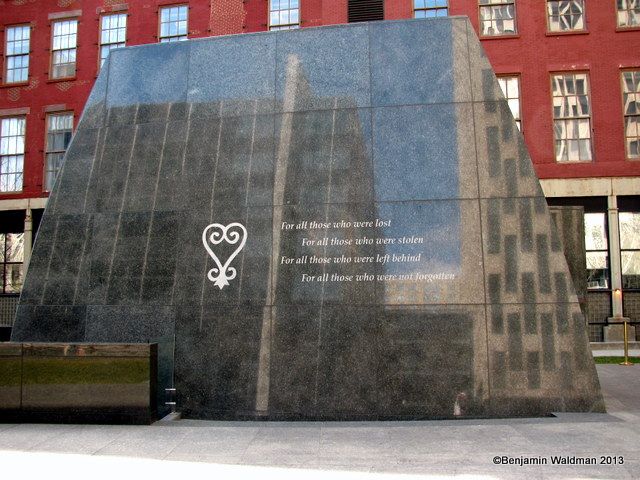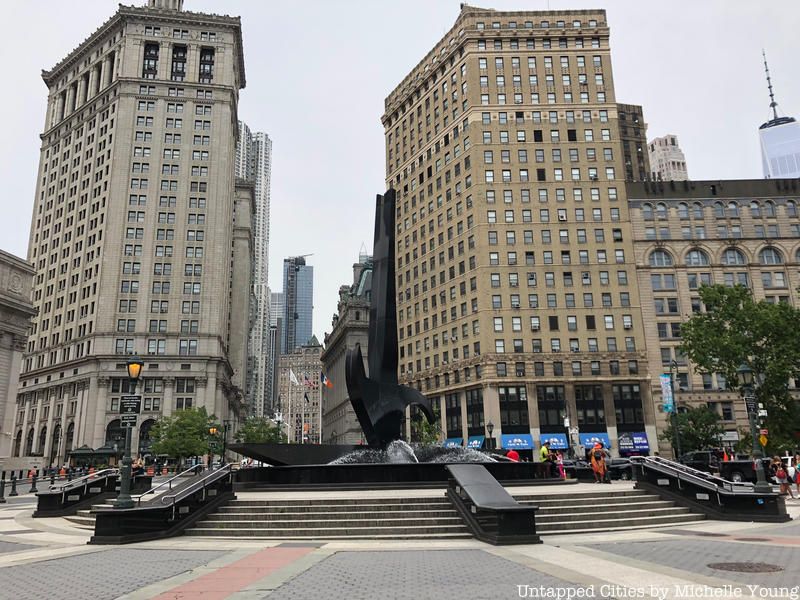NYC’s Forgotten ‘War on Christmas Trees’
Discover how an obscure holiday crackdown affects festive street vendors today!



Photo courtesy Chrysalis Architecture
On a regular basis, sites of an older New York City are exposed by heavy construction, allowing archaeologists to give New Yorkers a more detailed history of their city’s roots. Here are a few notable archaeological sites found in Manhattan.
In 2010, during the reconstruction of the World Trade Center site, work came to a halt as a 32-foot-long ship hull was uncovered about 30 feet underground. A 2014 analysis of the wood suggests it was cut down in 1773 from a white oak forest near Philadelphia. The ship is thought to be a Dutch vessel called a Hudson River Sloop used to carry people and cargo.
After decades of use the ship was eventually retired, permanently docked and eventually buried under garbage throughout the 1800s only to reemerge after 9/11. Along with the hull, a few smaller items were uncovered, including some ceramic dishes, a leather shoe sole, and bones of an ancient horse or cow crushed by the ship’s sinking.

Much like most archaeological sites found in New York City, the African Burial Ground was discovered in 1991 by construction workers. Located from Chambers to Duane Streets and Broadway to Foley Square, the grounds lay rest to over 400 African slaves who died over 200 years ago. The 6.6-acre area provided well-preserved remains which were able to shed light on New York’s significant slave population of the 18th century.
According to an analysis done in 1998 by Ena Fox and Dr. Michael Blakey of Howard University, the remains revealed harrowing injuries and traumas to the knees and broken necks due to the hard labor they endured to build the area as an active sea port. More information on the mapping and location of the site can be found here. On February 27, 2006, President George W. Bush through Presidential Proclamation named the African Burial Ground as a National Monument.

Photo courtesy Chrysalis Architecture
Although Washington Square Park is known formerly to be a graveyard, two previously forgotten burial vaults were exposed this past fall in early November during a water main project of the Department of Design and Construction. According to a New York Times article, the first vault, previously opened 50 years ago yielded was partially emptied of 25 skeletons and sealed once more.
However, the second vault was found completely untouched and filled with about two dozen coffins. Some are labeled with names, like “William,” others with just an age, “18–.” The archaeologists working the site determined it to be a family. Despite the astonishing discovery, the remains were not taken out, instead they were left out of respect to the interred. The water main project was moved a few away and with that, the vault was once again sealed off.
For more information and images of the vaults, take a look at this Untapped Cities article.

During the 19th century, the area of Foley Square–Five Points was an infamous slum. In 1991, the construction on a new courthouse at Foley Square revealed the rough life of poor Easter European and Irish immigrants who occupied the area. The excavation done by John Milner Associates, Inc. provided nearly 850,00 artifacts from 14 historic properties revealing the squalid, overcrowded living conditions of poor immigrants.
Despite the unsanitary conditions, the site showed residents did their best to offset their difficult conditions with set tables, imported ceramics for tea drinking, decent amounts of meat, multiple kinds of medicine, and apartment decorations. The excavation of this working-class neighborhood further informed the tough lives of struggling immigrants determined to create a better life for themselves, while still maintaining their ethnic roots.

Artifacts uncovered at 50 Bowery in an archeological excavation. Photos by Chrysalis Archeological Consultants
Lower Manhattan has been the site of much of NYC’s colonial history. An interesting addition (though not surprising) is alcohol. An excavation at 50 Bowery by Alyssa Loorya of Chrysalis Archaeology, before the current hotel was constructed yielded a treasure trove of bottles and other artifacts. Check many of them out here.
Also in Lower Manhattan, The oldest surviving bar in the city today is said to be The Bridge Cafe, existing since 1794. But these bottles go back a little further to taverns that no longer exist. In 2012, during a four month excavation project beneath the stretch between Fulton and Water Street, over 100 18th century liquor bottles were unearthed.
According to Loorya, who also handled the excavation at this site, the area in which the bottles were found was the site of a few taverns used to entertain passing sailors. Although no engraved names or labels are found on the bottles, Loorya explains that they were probably reused and refilled multiple times with liquors like wine or rum.
At over 200 years old, the findings a combination of intact, corked bottles and broken ones, and although the liquor has long since evaporated, the trove depicts the more merry atmosphere to bustling colonial Lower Manhattan.
Interested in more archaeological finds the city has to offer? Check out these highlights from the NYC Archaeological Repository. Get in touch with the author @verazvo.
Subscribe to our newsletter